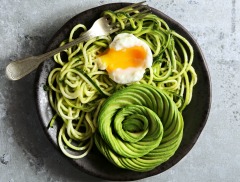Don't just meal plan... meal plan intelligently - with Meal Genius! Sign up for our free newsletter to get delicious recipes, sample meal plans and a whole lot more!
Greens, Purslane
Purslane is a leaf vegetable that can be used either fresh in salads or cooked like spinach.
It has a slightly sour and salty taste and is eaten throughout much of Europe and Asia. Because of its mucilaginous quality it is also suitable for soups and stews.
Purslane contains more omega-3 fatty acids than any other leafy vegetable plant. And according to Dr. Artemis Simopoulos - world renowned author and nutrition researcher- purslane has .01 mg/g of EPA - an omega-3 fatty acid normally found mostly in fish and some algae (like spirulina).
Purslane is also an excellent source of magnesium, beta-carotene and vitamin C.
The Benefits
- Special diets: Autoimmune Paleo Diet, Candida Diet, Diabetic, Elimination Diet, Gluten-Free Diet, Gluten-Free/Dairy-Free Diet, Grain-Free Diet, Low Acid Diet, Low Carb Diet, Low FODMAP Diet, Low Histamine Diet, Low Oxalate Diet, Low Starch Diet, Paleo Diet (Light), Paleo Diet (Strict), PCOS Diet, Pescetarian Diet, Primal Diet, Thyroid Diet, Vegetarian Diet, Whole Food
- Excellent Source of: Magnesium, VitaminA, VitaminC
- Good Source of: Iron, Potassium, Manganese
- Preferences: No Fish, No Red Meat, No Pork, No Eggs, No Shellfish, No Gluten, No Nuts, No Seeds, No Soy, No Dairy, No Poultry, No Molds, No Pseudograins, No Coconut, No Citrus, No Nightshade, No Legumes, No Corn, No Yeast, No Peanuts, No Grains, Low Carbohydrate, Low Cholesterol, Low Fat, Low Sodium, Low Sugars, Low Saturated Fat
Related Foods
Related Nutrients
Selecting and Storing
Buy fresh purslane with crisp, bright leaves. Store in the crisper of your refrigerator.









